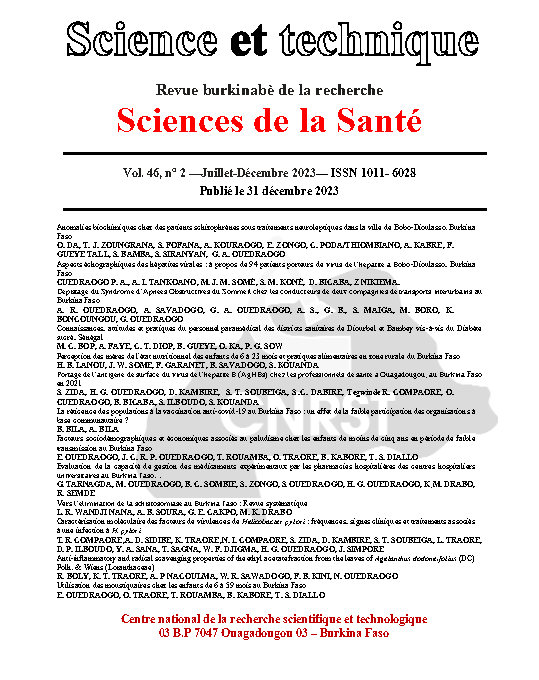Molecular Characterization of Helicobacter pylori Virulence Factors: Clinical Signs and Treatments Associated with Helicobacter pylori infection
Keywords:
Helicobacter pylori, virulence factor genes, clinical signs, treatments, Burkina FasoAbstract
Background: According to the WHO, Helicobacter pylori (H. pylori) is a high-priority pathogen for research and development of new antibiotics. Several putative virulence factors, such as vacA, cagA, and babA, have been identified as contributing to the risk and severity of H. pylori-related diseases. The aim of our study was to determine possible relationships between clinical signs associated with H. pylori infection, treatments used, and the vacA1 (subtypes), vacA2, babA2, and cagA genes.
Methodology: Two hundred and fifty (250) stool samples were collected at the two HOSCO and CERBA laboratory sites in Ouagadougou, Burkina Faso, from November 2020 to January 2021. A questionnaire form was completed for each sample. Bacterial DNA was extracted, and H. pylori virulence factors were characterized by PCR.
Results: The vacAi1 gene appeared to be linked to the presence of clinical signs of H. pylori infection, with p=0.05. The vacAs1, babA2, and cagA virulence factor subtypes appeared to be linked to the failure of eradication treatments with p=0.034; 0.027, and 0.025 respectively.
Conclusion: This study is one of the first of its kind in sub-Saharan Africa, particularly in Burkina Faso. The results suggest an association between the presence of the vacAi1 virulence factor and the onset of clinical signs of infection by H. pylori. This could lead to further studies to better understand this association.

